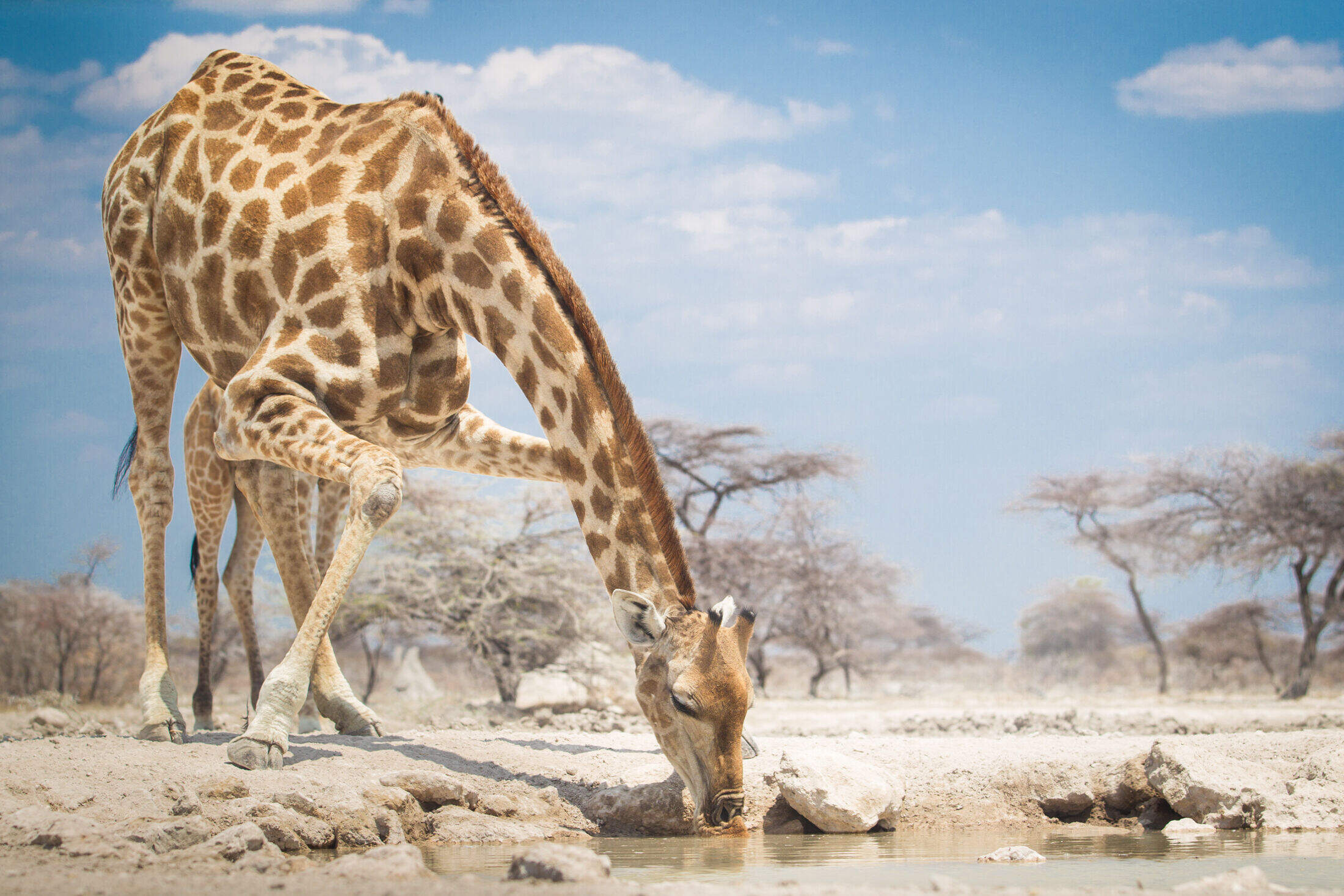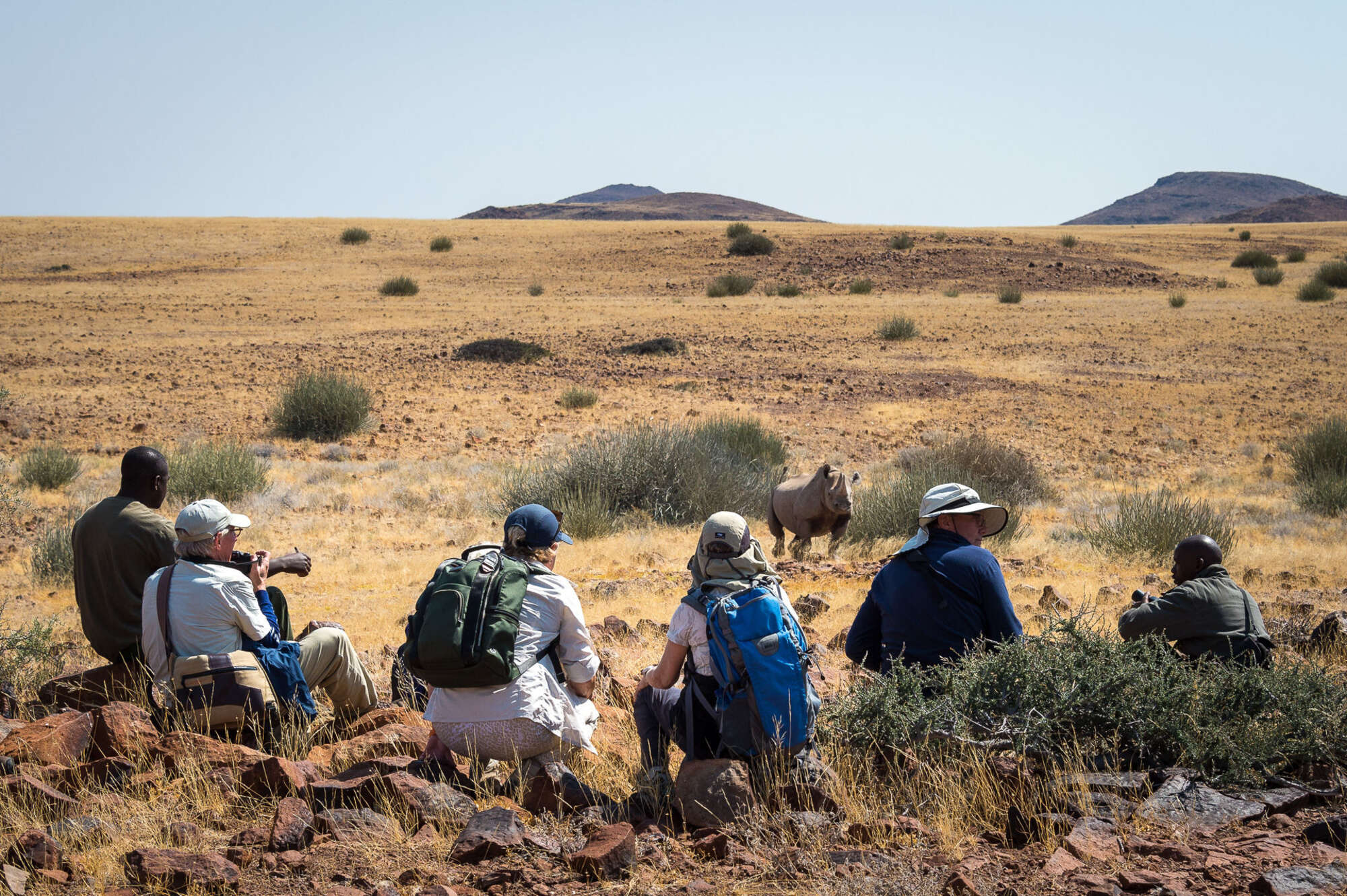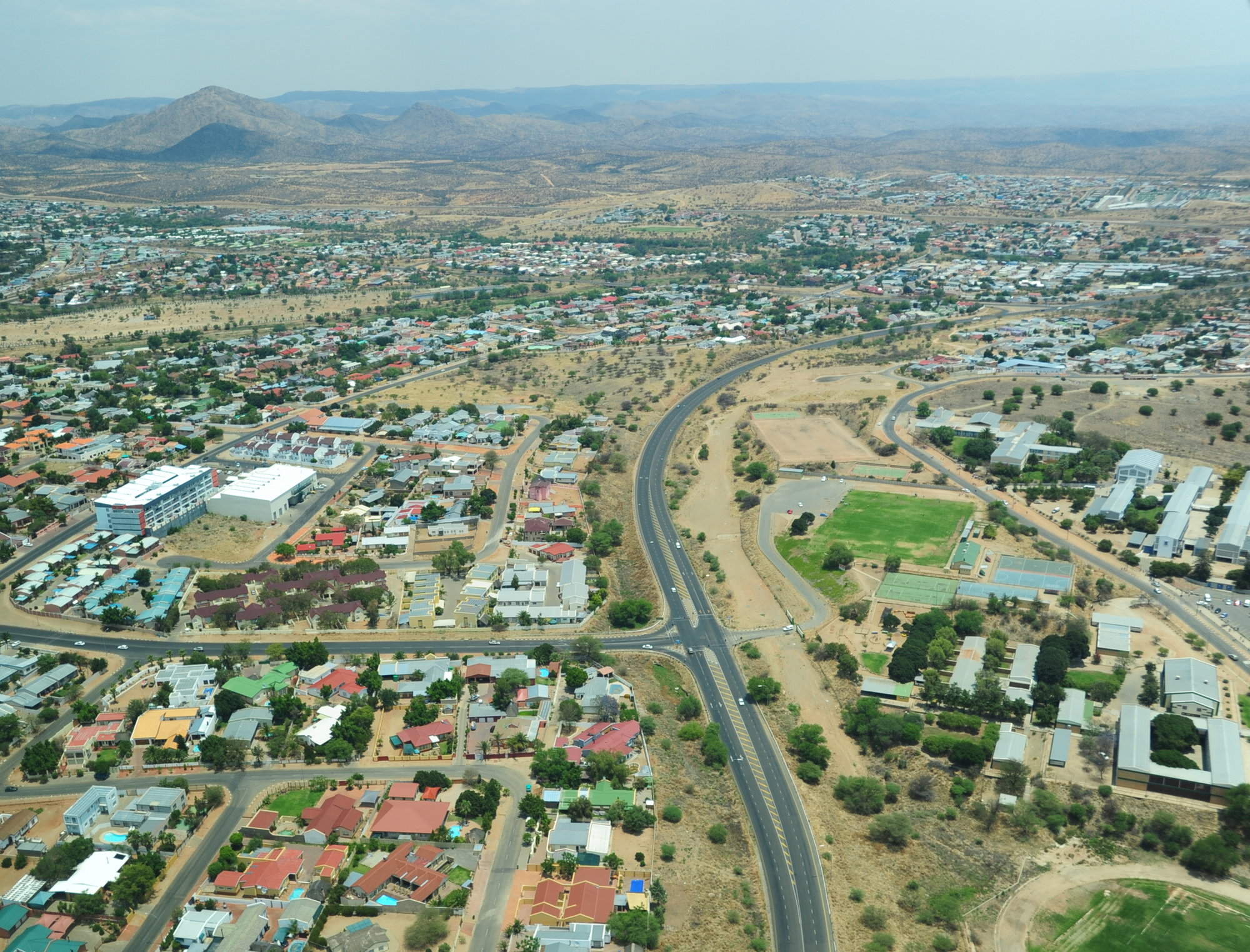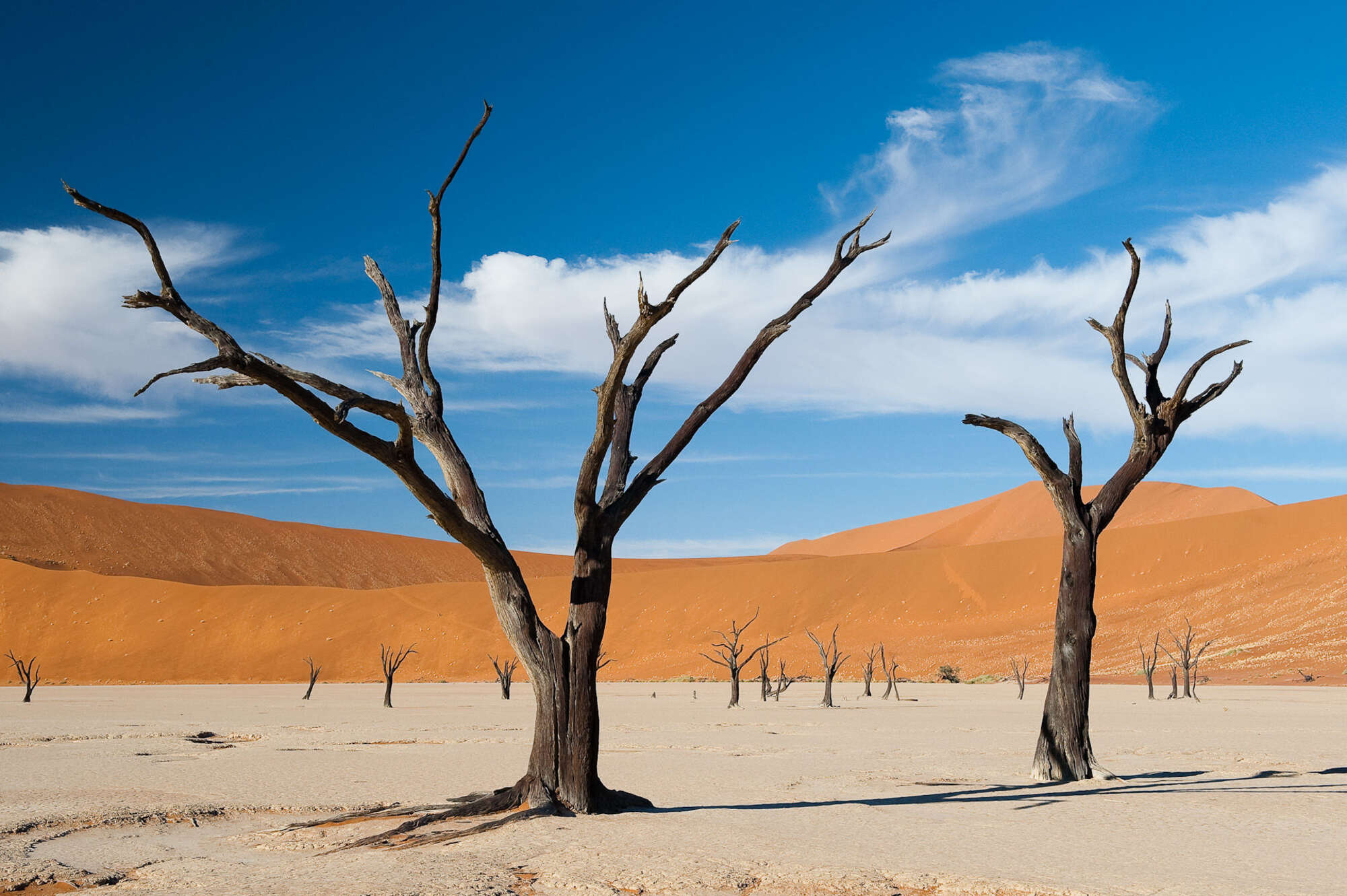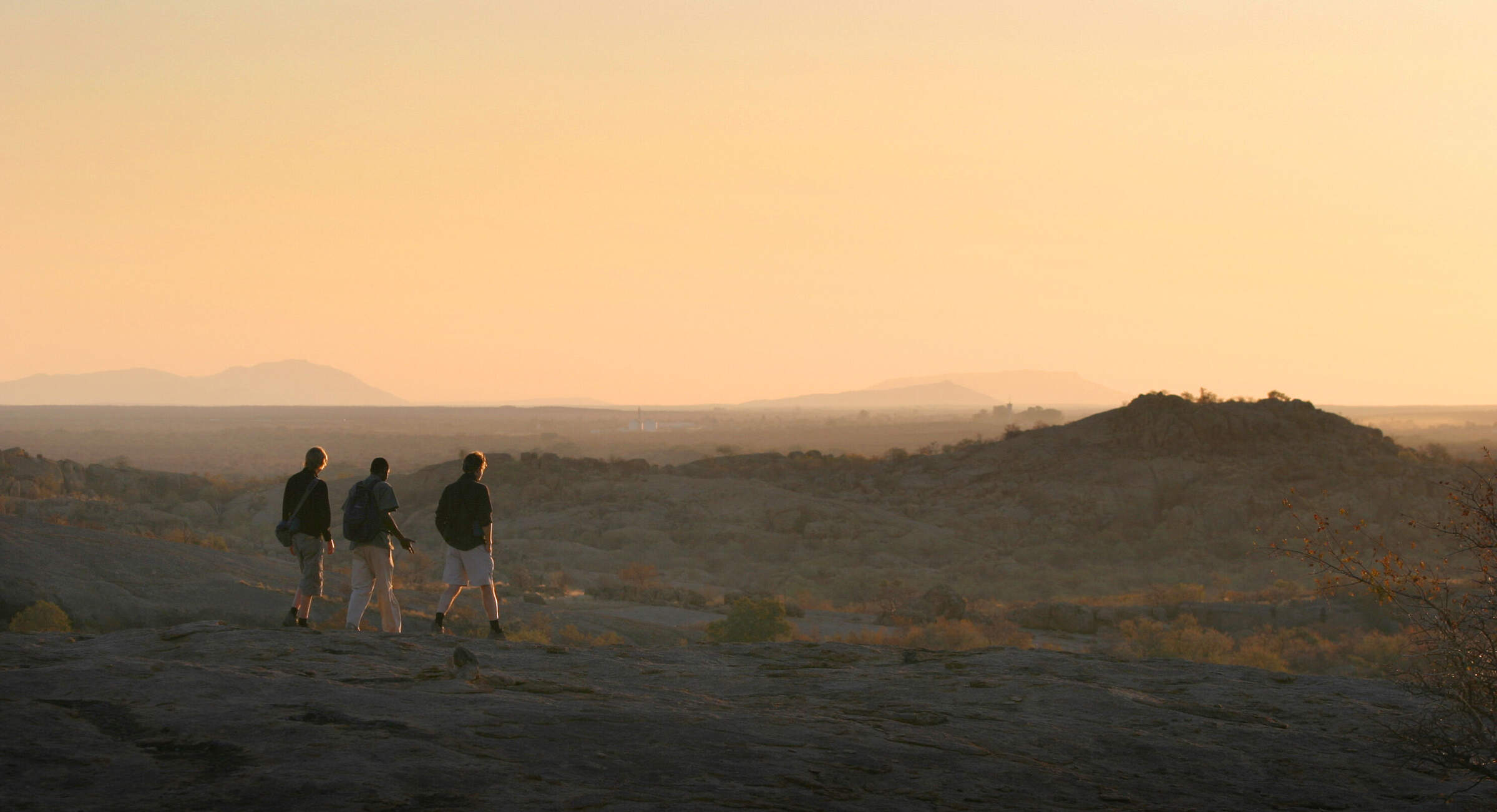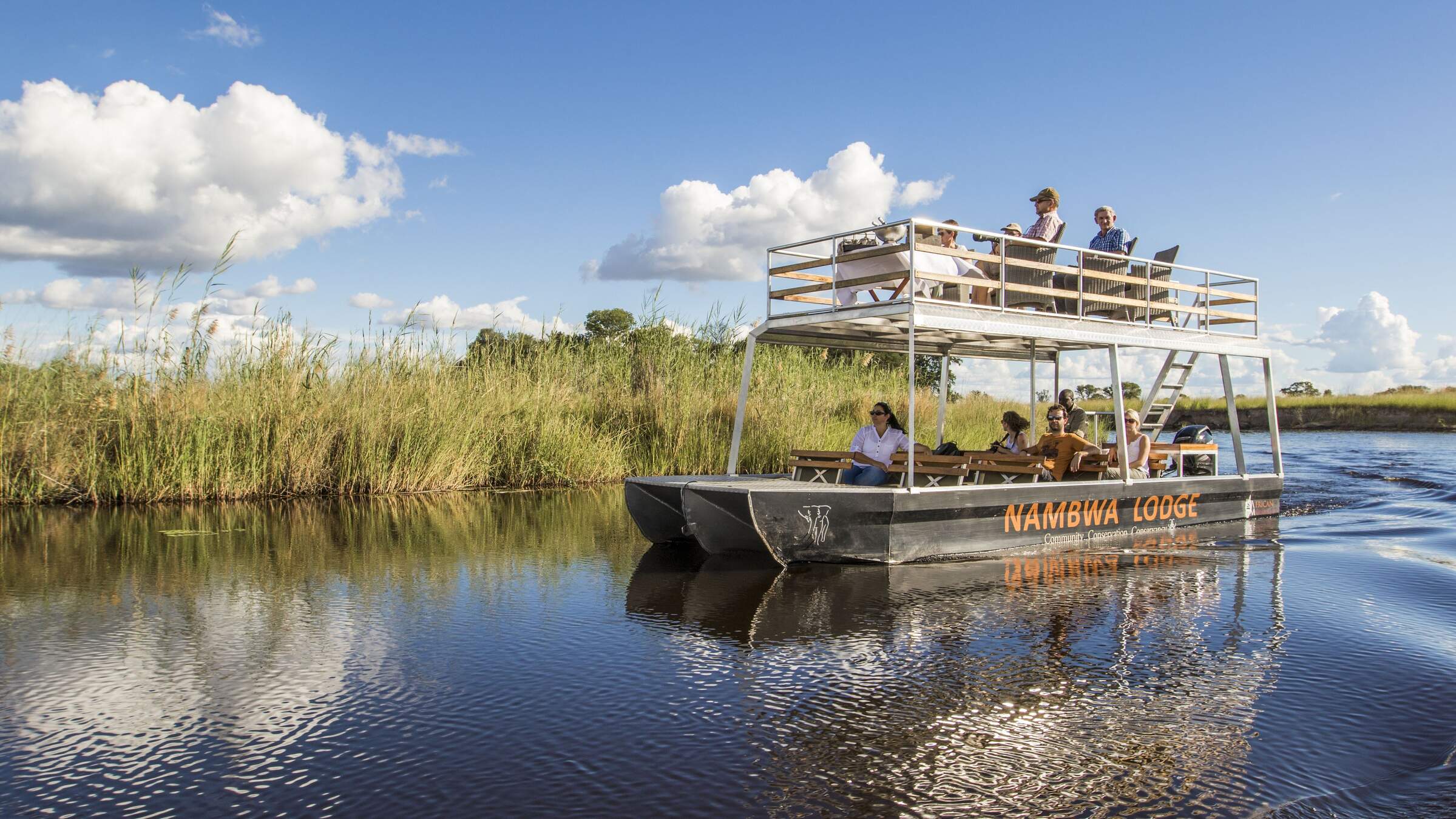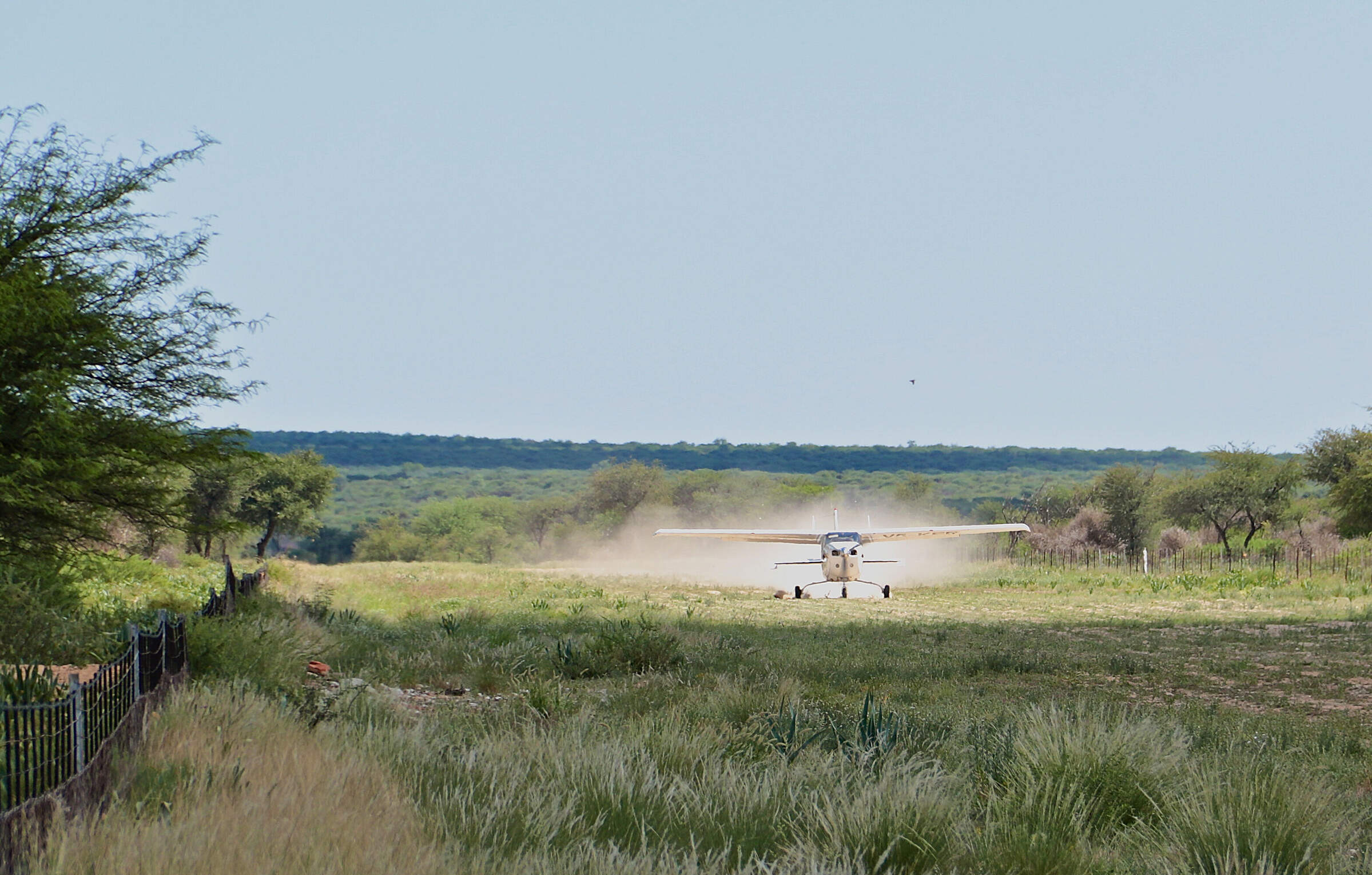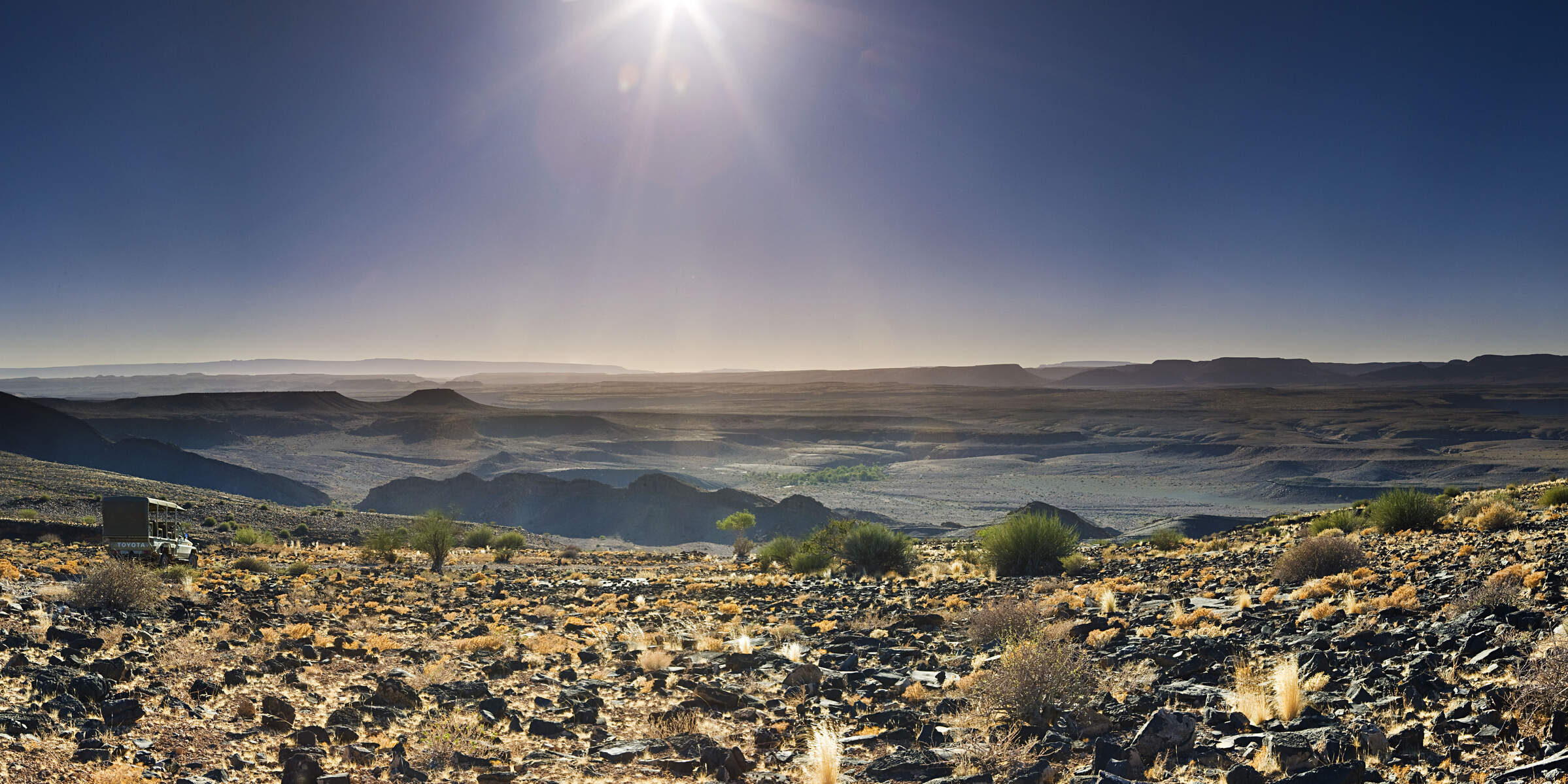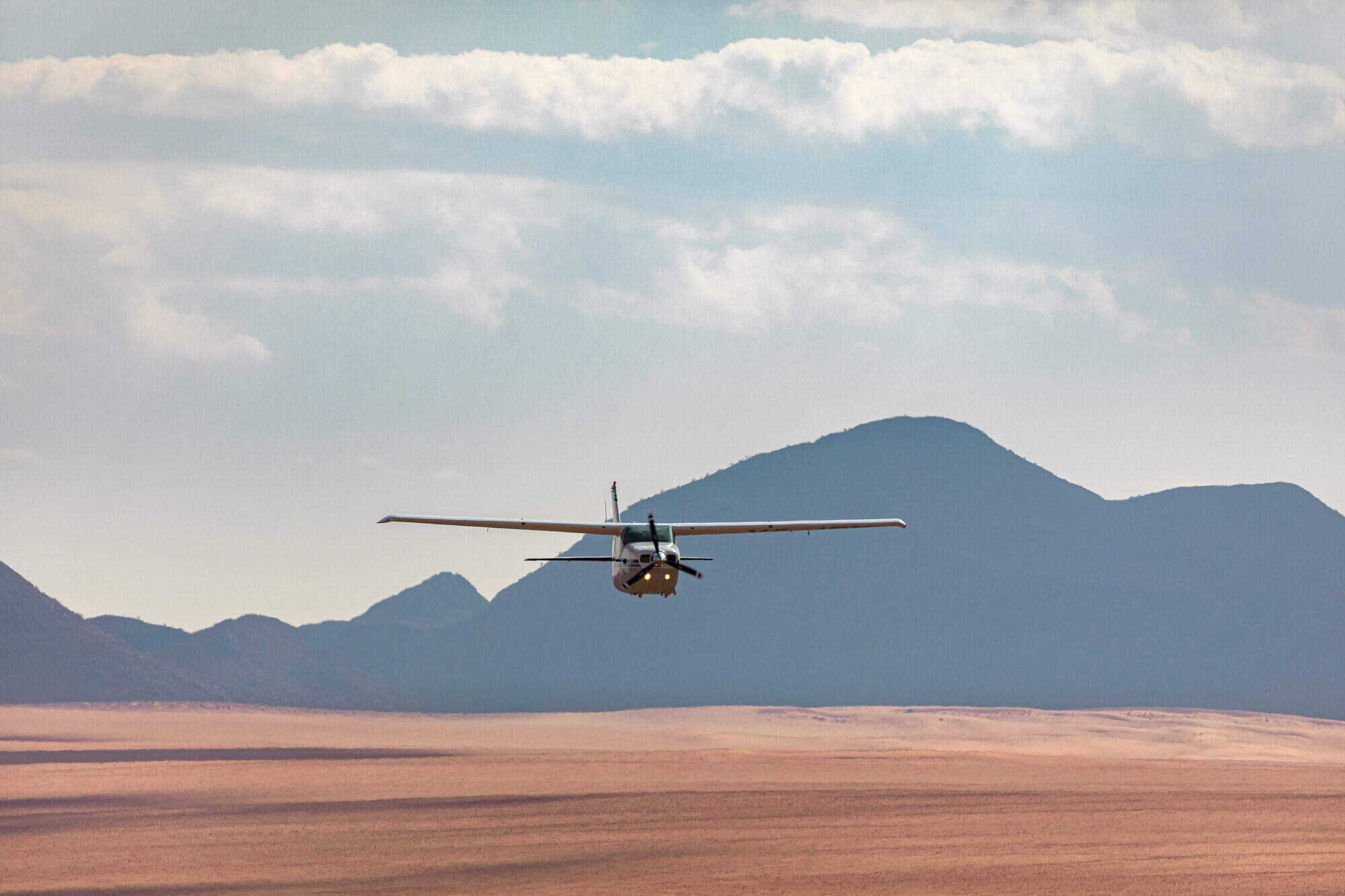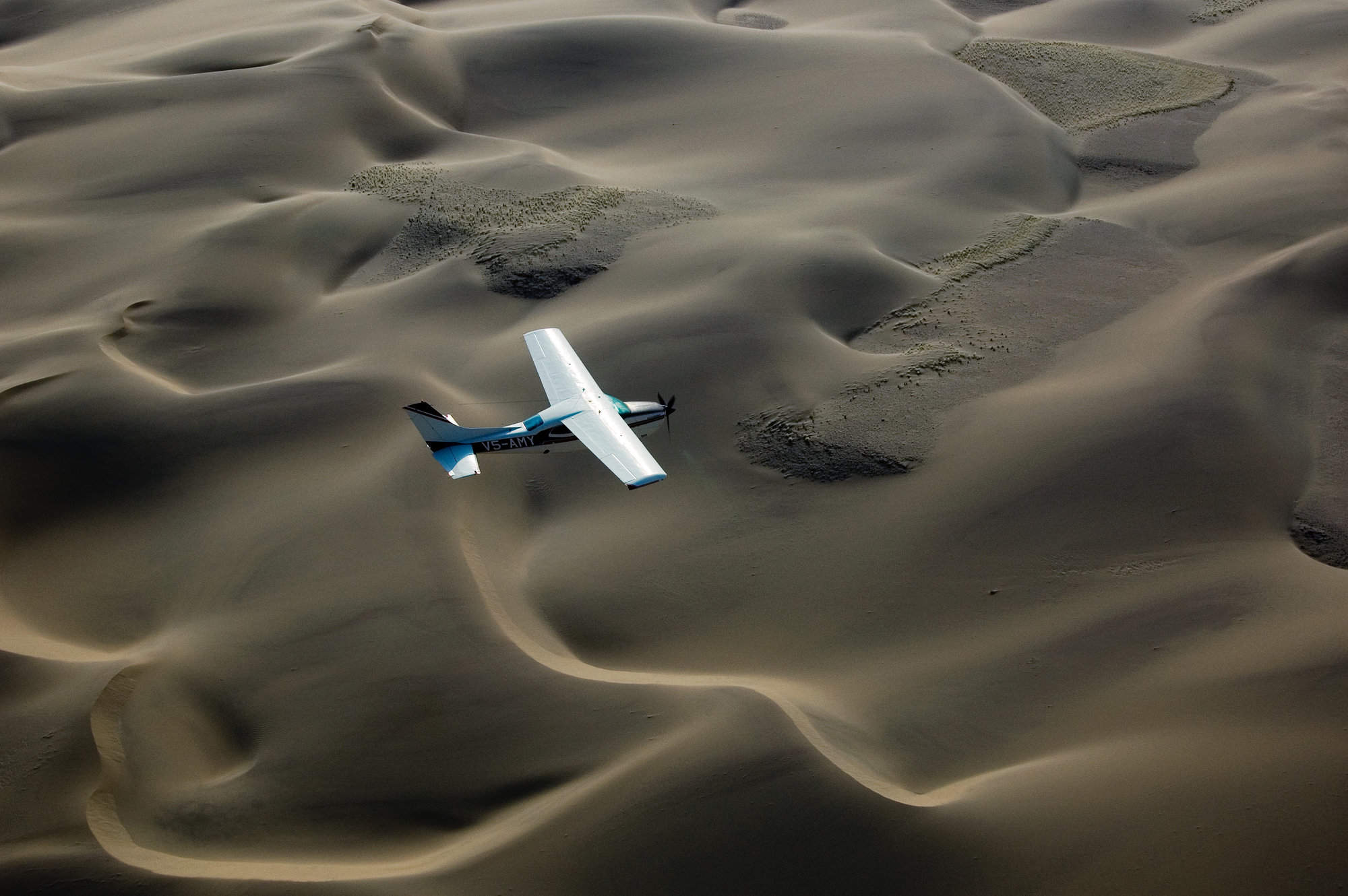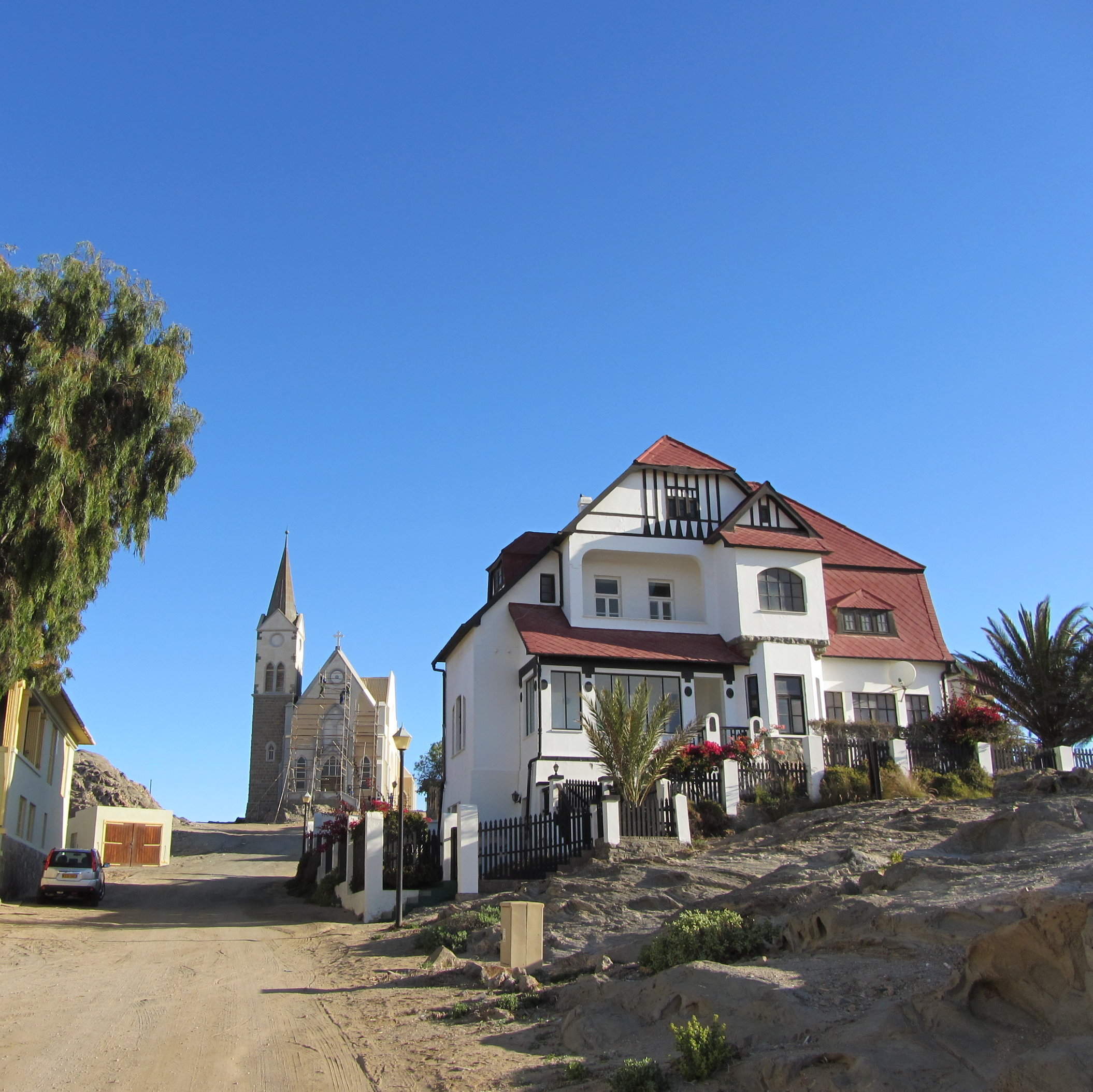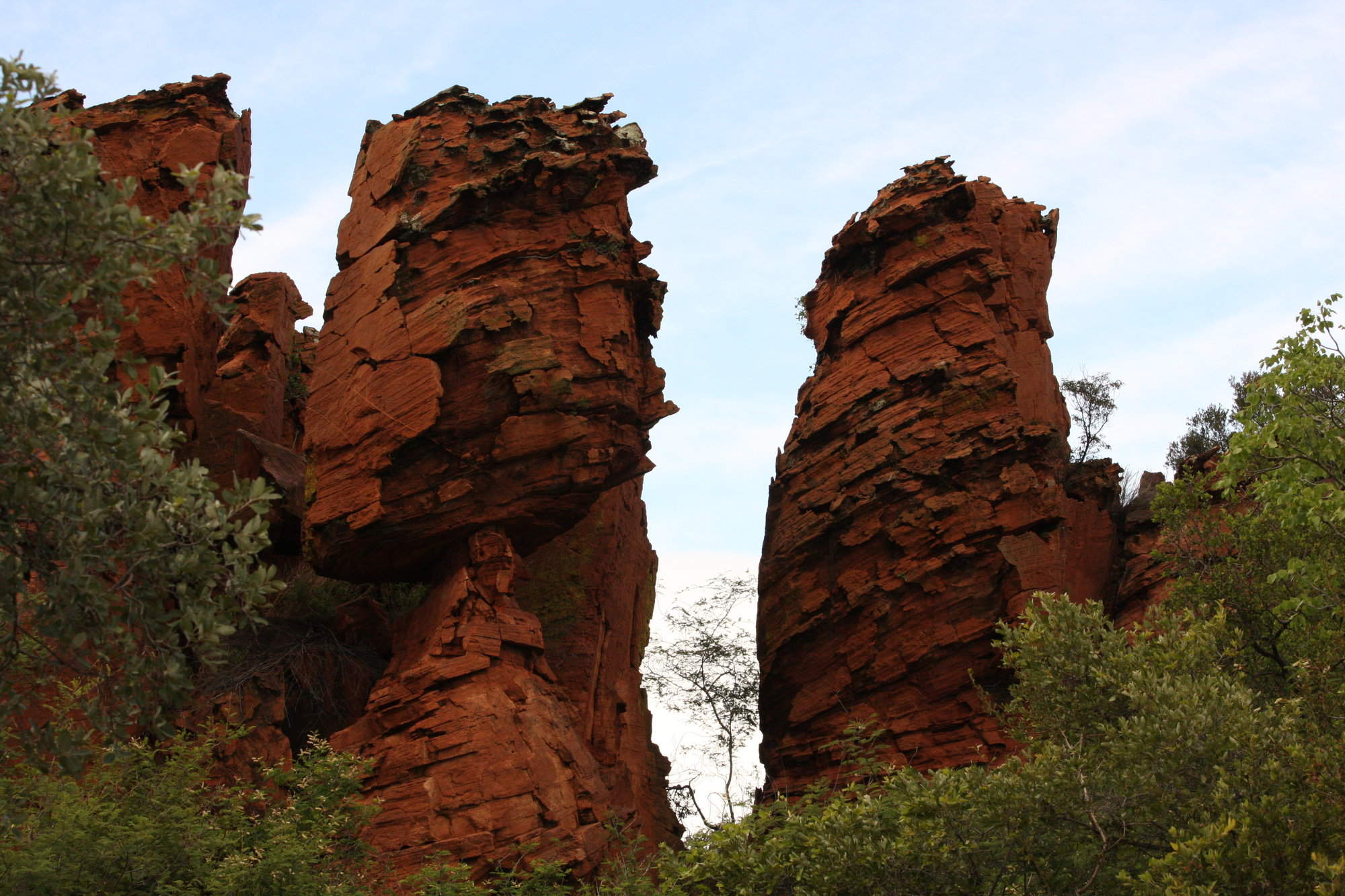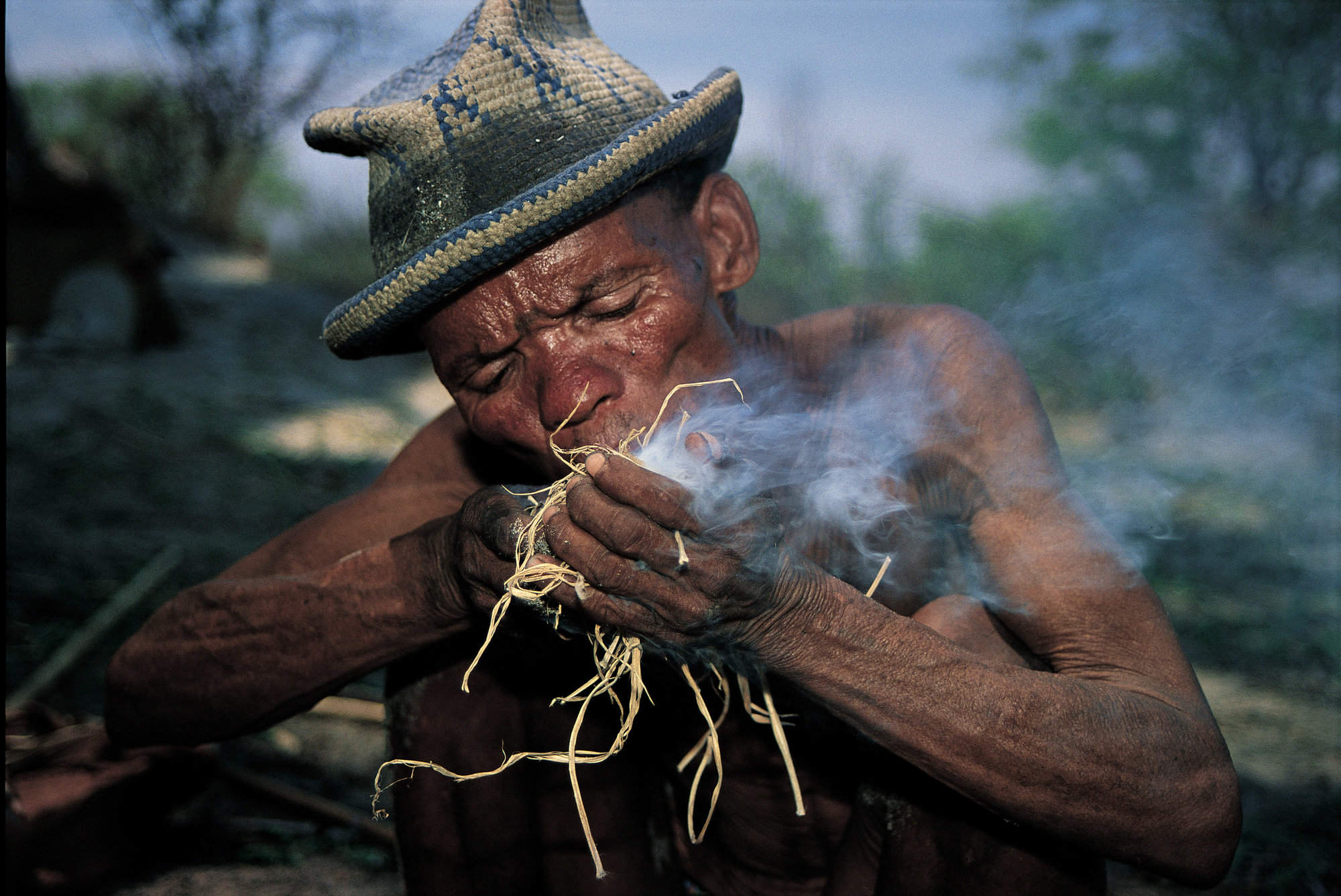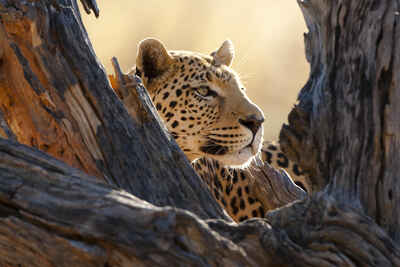
Okonjima Nature Reserve
Okonjima Nature Reserve
Nature offers no guarantees, not even at Okonjima, but the odds of spotting leopard here are exceptionally high.
So successful are sightings that the reserve has become almost synonymous with leopard photography.
Spread across 220km2 within Namibia’s scenic Central Highlands, Okonjima Nature Reserve has long been a sanctuary for endangered big cats – especially leopard and cheetah. Once persecuted by local cattle farmers, leopards roam free within the reserve, with the long-term aim of releasing them back into the wild.
The work is underpinned by the established AfriCat Foundation, which spearheads the conservation of carnivores throughout Namibia. As well as the big cats for which Okonjima is famed, nowadays those carnivores include the nocturnal brown hyena, aardvark and pangolin.
A highlight of a stay at Okonjima is to head out first thing in search of leopard or – as the sun dips below the horizon – to seek out the creatures of the night. With many of the animals radio-collared, tracking them is relatively straightforward, and with leopard largely habituated to the presence of humans, photographic opportunities here are almost unparalleled.
While big cats are very much the focus of these drives, that’s not to undermine the other species here, among them Hartmann’s mountain zebra, blue wildebeest and giraffe, as well as numerous antelope, from oryx to the diminutive Damara dik-dik.
Birdlife is impressive, too: eagles and vultures; korhaan and sandgrouse; colourful shrikes, waxbills and bee-eaters. Even the most experienced birder will be reaching for their binoculars to seek out specials such as Carp’s tit, greater scimitar hoopoe or the Damara rock runner.
To stay at Okonjima – and there is a range of excellent accommodation options – is to experience this unique setting at leisure. Exploring on foot, either with a guide or on a self-guided trail, simply adds to the sense of place.

Safaris visiting Okonjima
Just ideas, we'll always tailor-make a trip for you
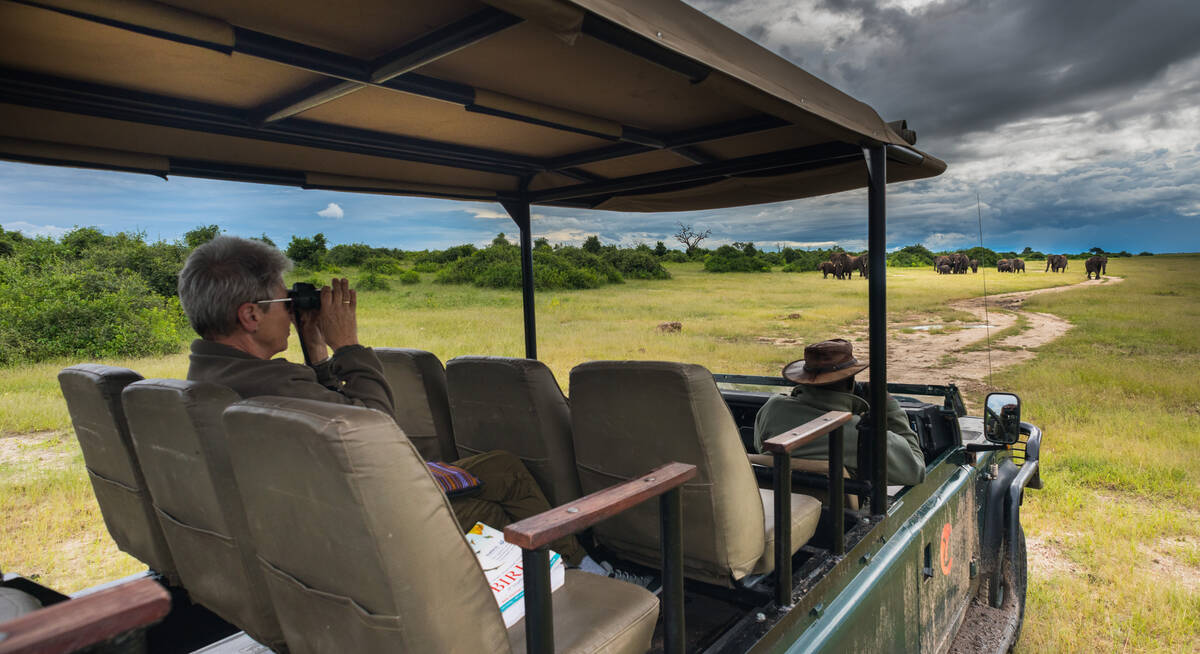
Pygmy Mouse Self-drive Safari
18 days • 10 locations
WINDHOEK AIRPORT TO VICTORIA FALLS AIRPORT
A truly epic southern African self-drive safari adventure from Namibia’s mountains and deserts, along the lush Caprivi Strip to Botswana and Victoria Falls in Zimbabwe, staying at luxury lodges throughout.
US$10,590 - US$10,590 per person
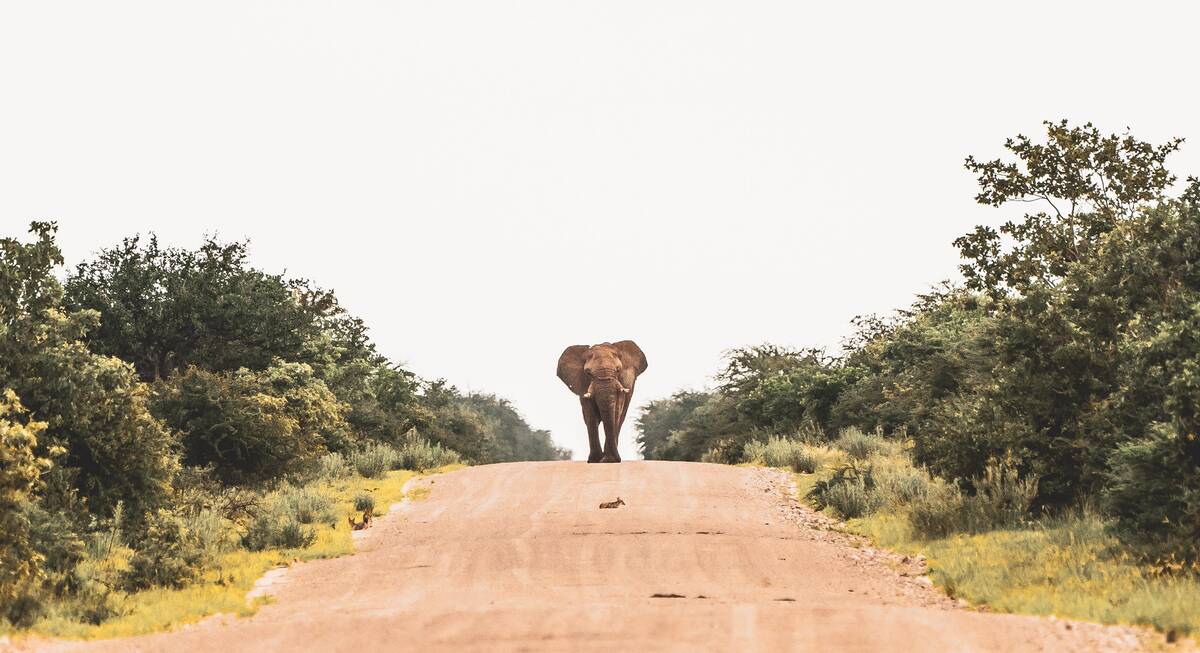
Black Wildebeest Self-drive Safari
19 days • 10 locations
CAPE TOWN AIRPORT TO WINDHOEK AIRPORT
Journey from South Africa’s cosmopolitan Cape Town to central Namibia’s Okonjima Nature Reserve during this self-driven safari. The route passes through a stunning variety of landscapes, offering access to this beautiful continent’s rich diversity.
US$4,380 - US$4,410 per person
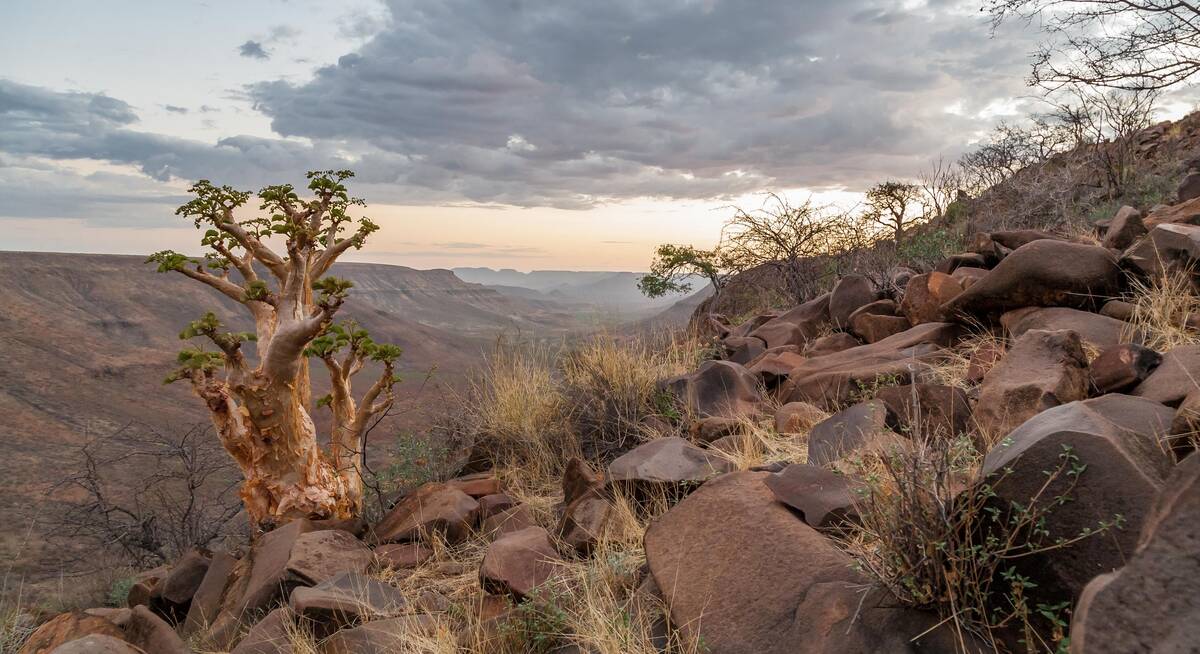
Dune Lark Fly & Drive Safari
14 days • 8 locations
WINDHOEK AIRPORT TO WINDHOEK AIRPORT
A combination fly-in self-drive exploration of Namibia, with quick, easy and scenic flights in and out of Sossusvlei before a classic road trip adventure of the country’s rugged north.
US$5,980 - US$5,980 per person
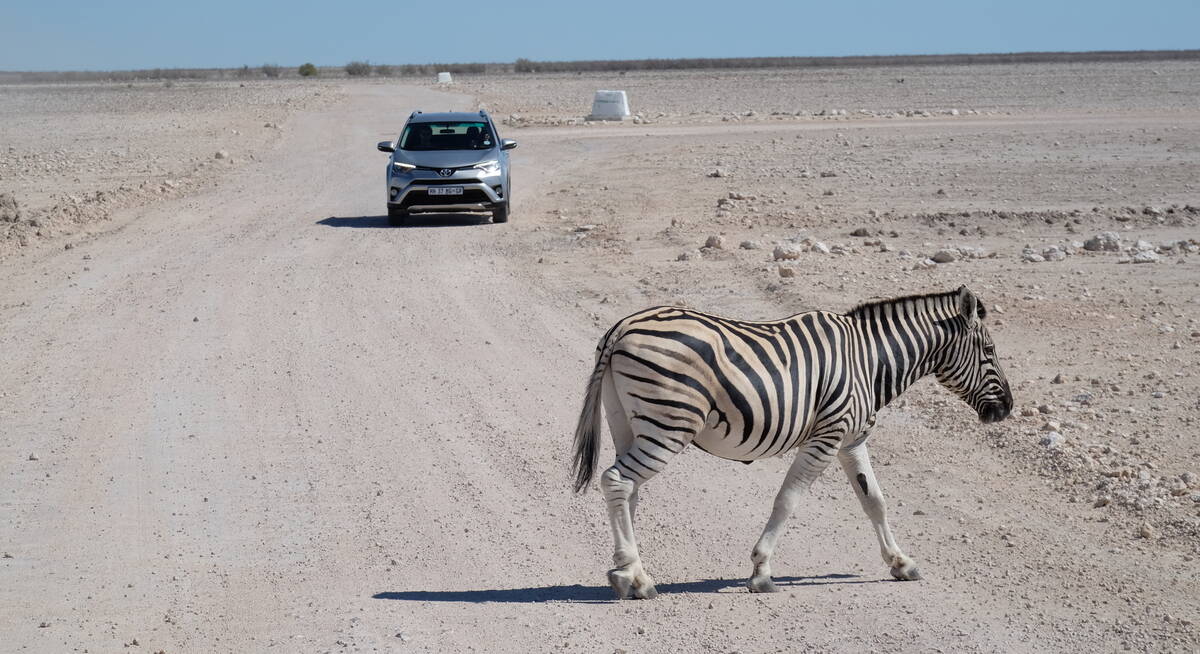
Namaqua Chameleon Self-drive
12 days • 7 locations
WINDHOEK AIRPORT TO WINDHOEK AIRPORT
A classic 12-night self-drive adventure around the highlights of eastern and northern Namibia taking in Sossusvlei, Swakopmund, Damaraland, Etosha and a final stop at Okonjima. Comfortable lodges and great value.
US$4,210 - US$5,320 per person
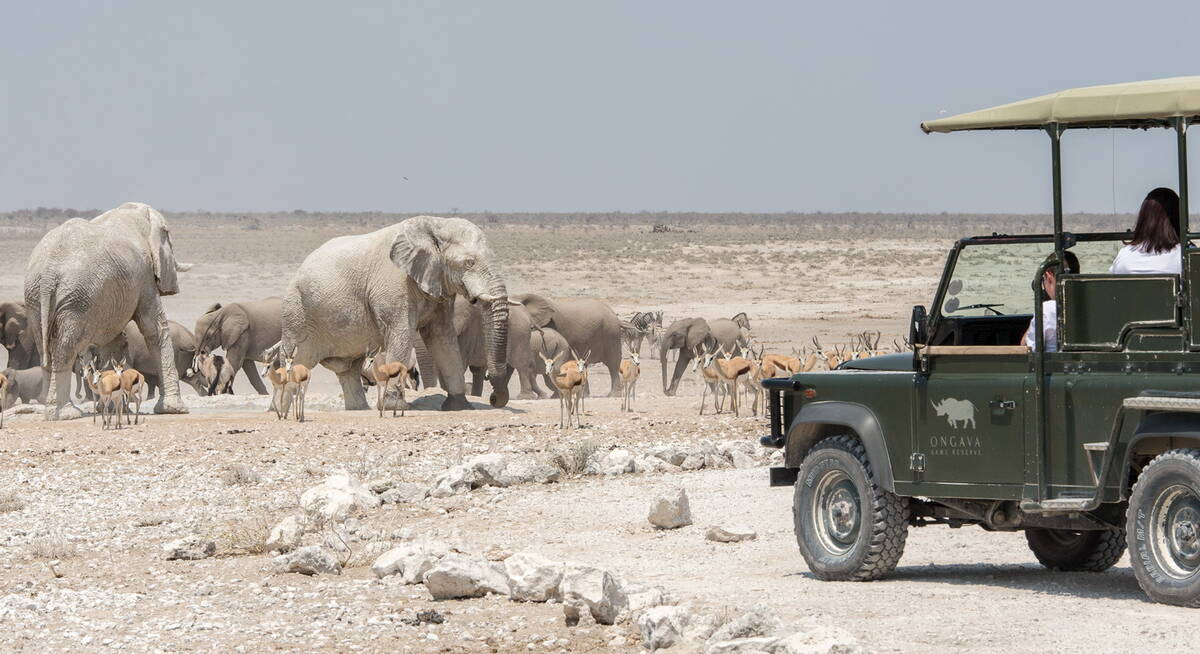
Brown Hyena Self-drive
14 days • 8 locations
WINDHOEK AIRPORT TO WINDHOEK AIRPORT
The perfect trip for those who want to mix the adventure and freedom of a self-drive with some of our favourite luxury camps in Namibia and a great mix of activities.
US$10,120 - US$10,250 per person
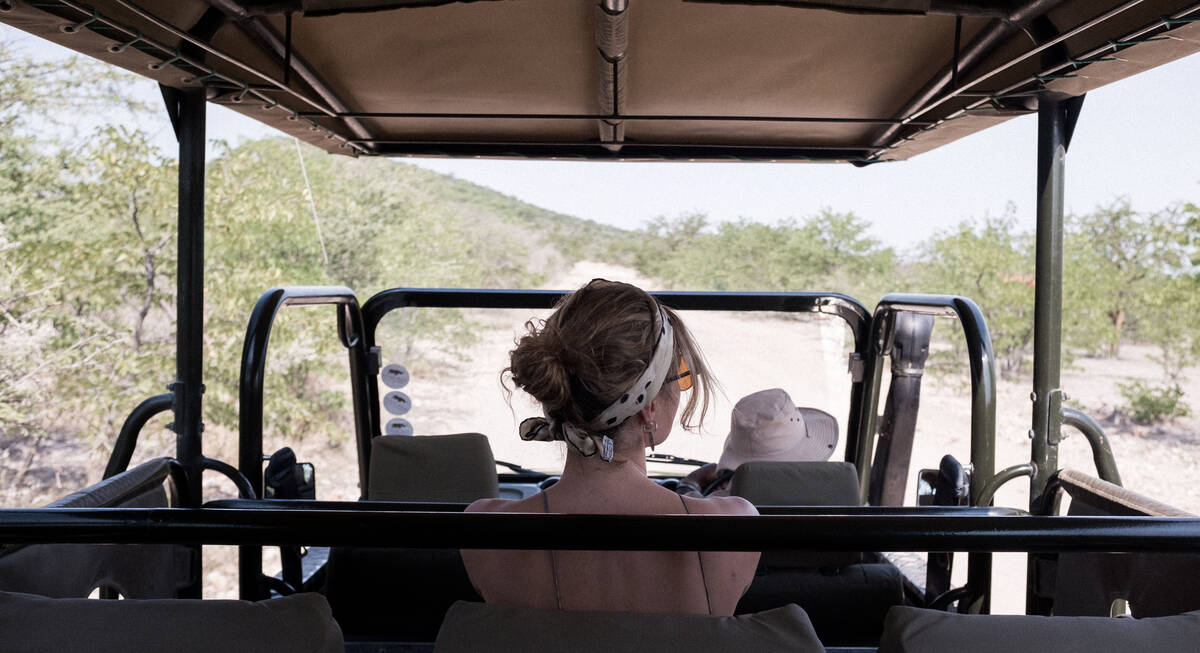
Rock Agama Self-drive Safari
9 days • 6 locations
WINDHOEK AIRPORT TO WINDHOEK AIRPORT
Big on experience and light on time, this self-drive trip packs in Namibia’s highlights while staying in a selection of luxury camps and lodges for an unforgettable 10 days.
US$9,960 - US$14,840 per person
Most recent reviews of our safaris to Okonjima
Click below to browse all 697 reviews from Okonjima Nature Reserve. All from our travellers; all are in full & unedited.
Arrived 14 Feb 2025, 20 nights
"My Feb 2025 trip"
Overall rating: Excellent
Arrived 22 Dec 2024, 14 nights
"Namib Desert, Damaraland, Etosha self-drive"
Overall rating: Excellent
Arrived 15 Dec 2024, 16 nights
"My Dec 2024 trip"
Overall rating: Excellent
Arrived 20 Oct 2024, 20 nights
"My Oct 2024 trip"
Overall rating: Excellent
Arrived 13 Oct 2024, 15 nights
"My Oct 2024 trip"
Overall rating: Excellent
Arrived 9 Oct 2024, 15 nights
"My Oct 2024 trip"
Overall rating: Excellent
Arrived 7 Oct 2024, 17 nights
"My Oct 2024 trip"
Overall rating: Excellent
Arrived 6 Oct 2024, 17 nights
"My Oct 2024 trip"
Overall rating: Excellent
Arrived 2 Oct 2024, 18 nights
"My Oct 2024 trip"
Overall rating: Excellent
Arrived 30 Sep 2024, 12 nights
"Our October Namibia Trip"
Overall rating: Excellent
Where to stay in Okonjima
Our suggestions for safari camps in Okonjima Nature Reserve
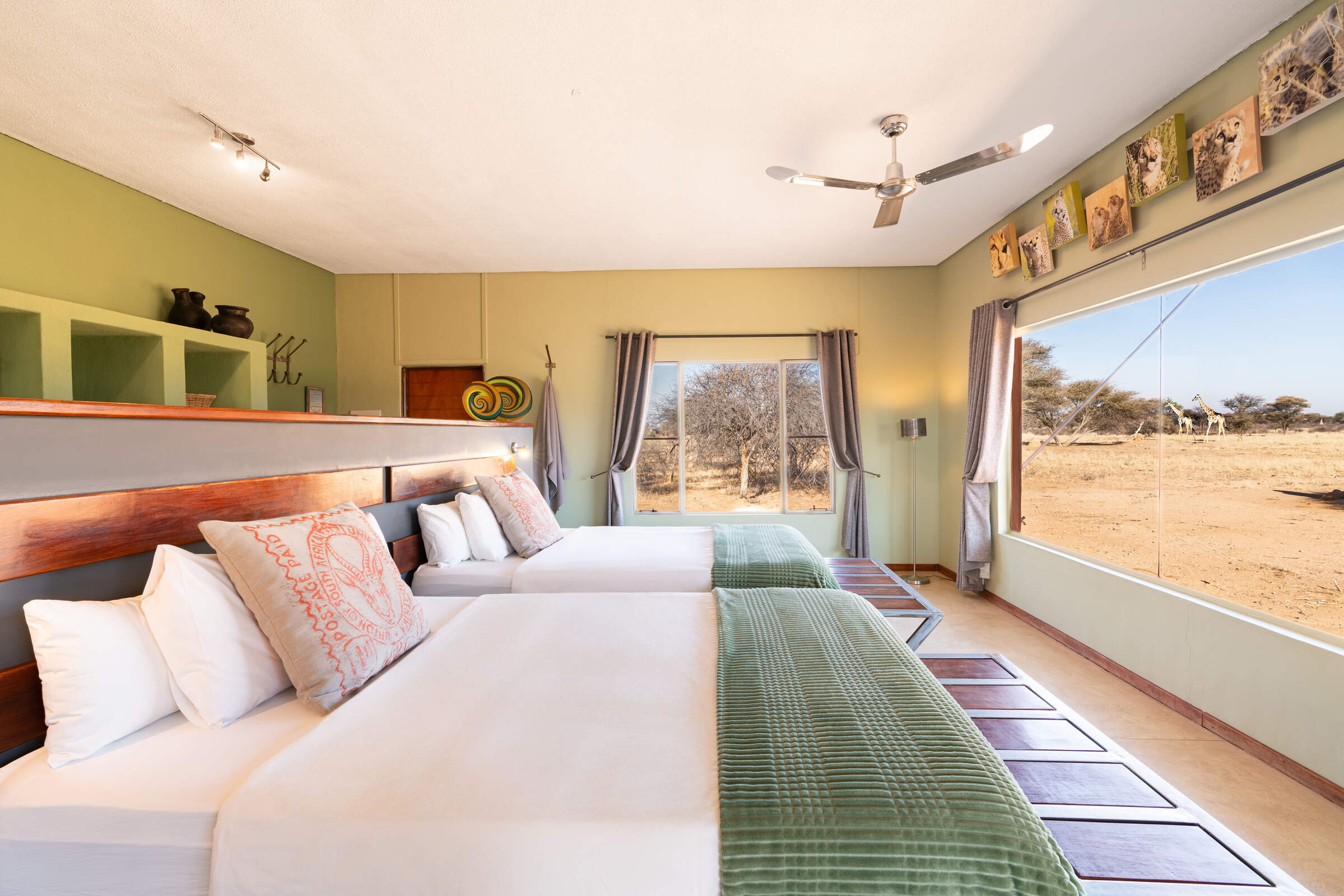
Okonjima Plains Camp
Plains Camp is the most economical option on the Okonjima Reserve, where big cats can often be seen at close quarters, with great photographic opportunities.
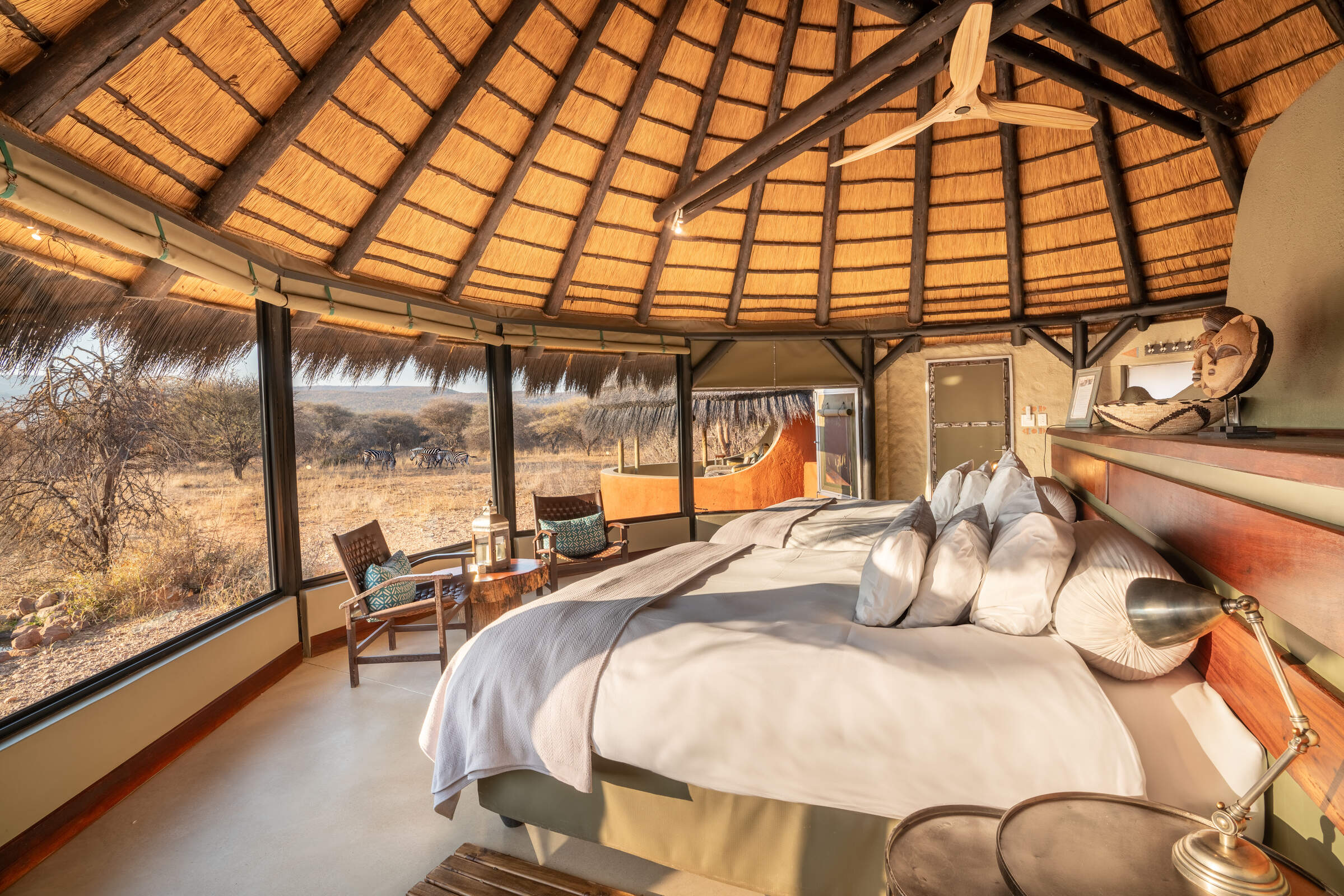
Okonjima Bush Camp
Roomy chalets, personal service and great food make Okonjima Bush Camp a comfortable base from which to explore the Okonjima Reserve.
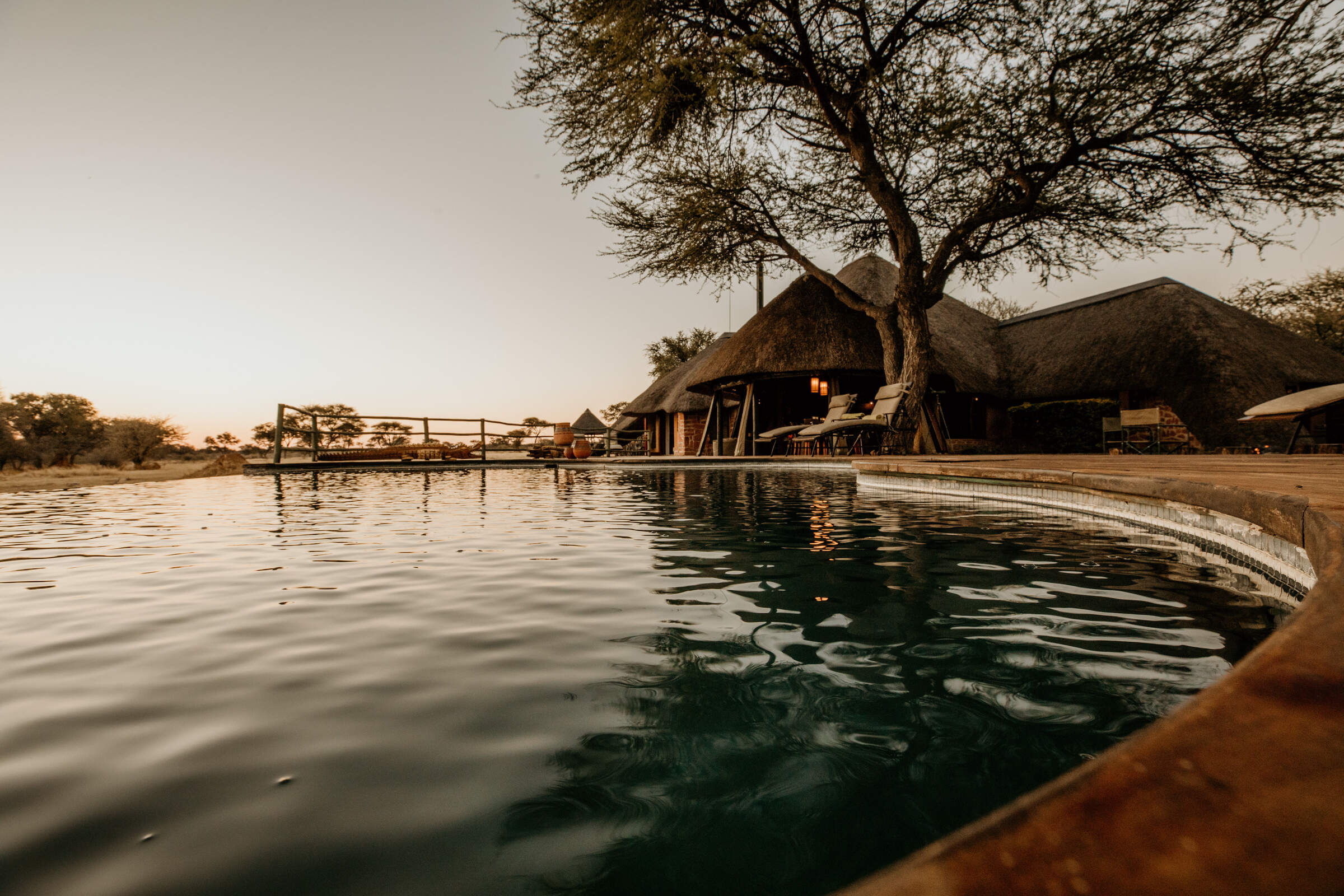
Okonjima Villa
Okonjima Villa is the most exclusive place to stay on Okonjima, offering luxury, privacy, flexibility and fantastic wildlife-watching opportunities.
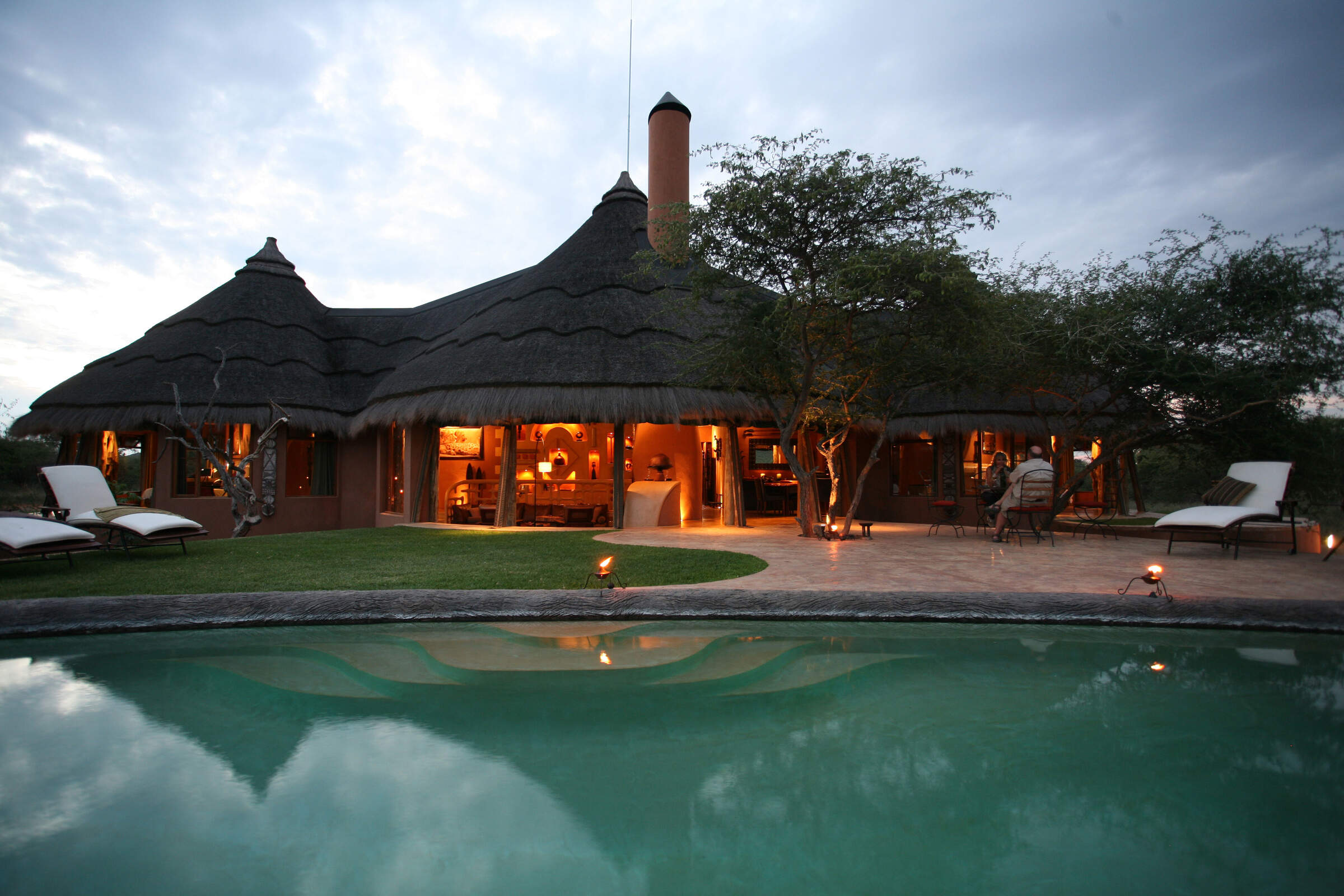
Okonjima Bush Suite
Okonjima Bush Suite is an exclusive, luxurious two-bedroom retreat with a private guide and chef, offering some great photo opportunities when tracking predators.
Our travellers’ wildlife sightings in Okonjima
This is their success for sightings in Okonjima Nature Reserve. Click on a species for more detail. How we work this out.

98% success

96% success

95% success

93% success

71% success

63% success

55% success

46% success

44% success

21% success

9% success

8% success
When to go to Okonjima Nature Reserve
Okonjima Nature Reserve has two distinct seasons.
The dry season (May to October) is ideal for wildlife viewing, with clear skies and cooler temperatures perfect for leopard tracking and night drives. Animals gather around waterholes, offering excellent sighting opportunities at the AfriCat Foundation's research sites.
The wet season (November to April) transforms the landscape with lush vegetation, attracting diverse wildlife. Sightings become more challenging due to dispersed animals and denser foliage, but birdwatching peaks with many migrant species. The AfriCat Pangolin Research Project benefits from softer soils, increasing chances of spotting these elusive creatures.
Click on the months below for a detailed guide on travelling to this area:
Jan
Feb
Mar
Apr
May
Jun
Jul
Aug
Sep
Oct
Nov
Dec
Okonjima Nature Reserve in January
Okonjima Nature Reserve experiences its rainy season in January. The reserve's landscape transforms, with lush vegetation sprouting across the 220km2 area. This greening attracts diverse wildlife, including the reserve's famous leopards and cheetahs.
The AfriCat Foundation's conservation efforts are in full swing, with researchers monitoring how the increased rainfall affects predator behaviour. Visitors can participate in tracking activities, though the thicker vegetation can make sightings more challenging. Guided bush walks provide insights into the reserve's flora, now in bloom. Night drives reveal nocturnal creatures taking advantage of the cooler evenings.
Birdwatchers will enjoy the numerous migrant species present during this time.
- Variable weather, occasional thunderstorms
- Wildlife dispersed, harder to spot
- Birdlife at its most spectacular
- Low tourist numbers, favourable rates
- AfriCat Foundation tours less crowded
Our view
This is not a great time to visit
Weather in January
Okonjima Nature Reserve in February
February at Okonjima Nature Reserve sees continued rainfall, maintaining the lush landscape.
The AfriCat Foundation's research projects are focussed on how predators adapt to the wet conditions. Visitors can join leopard tracking expeditions, though dense vegetation may make sightings more challenging. The reserve's waterholes become less crucial for wildlife, as water is more widely available. This dispersal of animals creates unique tracking opportunities for guests. Guided bush walks reveal a myriad of smaller creatures and insects thriving in the wet conditions.
The AfriCat Pangolin Research Project is particularly active, as these elusive creatures are more easily spotted in the softer soil. Birdwatching remains excellent, with many species in breeding plumage.
- Humid with some rain, localised storms
- Lush vegetation, bush feels alive
- Wildlife harder to see in Okonjima
- Excellent time for bird enthusiasts
- Low season rates at Okonjima lodges
Our view
This is not a great time to visit
Weather in February
Okonjima Nature Reserve in March
As rains begin to taper off at Okonjima Nature Reserve, wildlife viewing improves. The landscape remains verdant, providing ample food for herbivores and their predators.
The AfriCat Foundation's leopard and cheetah rehabilitation programs are busy, with researchers monitoring how these big cats adapt as the seasons change. Visitors can participate in tracking activities with higher chances of successful sightings.
Camps in Okonjima offer excellent bases for exploration, with guided bush walks revealing the intricate ecosystems of the reserve. Night drives provide opportunities to spot nocturnal animals, including honey badgers and porcupines.
The AfriCat Pangolin Research Project continues its vital work, offering guests unique insights into these rare creatures. As the landscape dries, animals begin to concentrate around permanent water sources, enhancing game viewing opportunities.
- Weather becoming drier as the month progresses
- Animals looking sleek after months of plenty
- Leopard tracking still challenging
- Migrant birds begin to leave
- Low visitor numbers, great lodge deals
Our view
A good time to visit, with pros & cons
Weather in March
Okonjima Nature Reserve in April
April marks the transition to the dry season at Okonjima Nature Reserve. Leopard and cheetah sightings become more frequent as vegetation thins and animals congregate around water sources. The reserve's waterholes become increasingly important, offering excellent game viewing opportunities throughout the day.
Guided bush walks reveal the reserve's diverse flora and fauna, with knowledgeable guides explaining the intricate relationships within the ecosystem. Night drives provide thrilling encounters with nocturnal predators.
The AfriCat Pangolin Research Project continues, though sightings become more challenging as the ground hardens. Birdwatching remains rewarding, with many species still in breeding plumage.
- Cooler nights, drier days at Okonjima
- Wildlife starting to congregate near water
- Improved visibility for leopard tracking
- Fresh, clean air ideal for photography
- Easter sees a slight increase in visitors
Our view
A good time to visit, with pros & cons
Weather in April
Okonjima Nature Reserve in May
May at Okonjima Nature Reserve sees the dry season in full swing. The AfriCat Foundation's tracking programs yield excellent results as wildlife concentrates around water sources. Leopard sightings are frequent. The reserve's waterholes become wildlife hotspots, offering excellent game viewing throughout the day.
The reserve's landscape takes on golden hues, creating stunning backdrops for photography. Guided bush walks offer intimate encounters with smaller creatures and detailed explanations of the reserve's ecology. Night drives reveal a different side of Okonjima, with opportunities to spot elusive nocturnal animals.
The AfriCat Pangolin Research Project faces challenges as these creatures become more elusive in the drier conditions. Birdwatching remains rewarding, with resident species easy to spot in the thinning vegetation.
- Lovely weather, warm days, cool nights
- Wildlife easier to spot around waterholes
- Excellent conditions for night drives
- AfriCat tours offer great sightings
- Shoulder season, moderate lodge rates
Our view
A very good time to visit
Weather in May
Okonjima Nature Reserve in June
June brings cooler temperatures to Okonjima Nature Reserve, ideal for outdoor activities. Leopard sightings and game viewing are excellent as animals congregate around diminishing water sources.
Guided bush walks reveal the reserve's winter adaptations, while night drives provide thrilling encounters with nocturnal wildlife.
Birdwatching focuses on resident species, with clear skies enhancing visibility. Photographers benefit from the crisp air and golden light of winter, capturing stunning images of Okonjima's diverse wildlife against the dry landscape.
- Clear days, cold nights at Okonjima
- Prime time for leopard and cheetah viewing
- Night drives reveal nocturnal wildlife
- Stargazing conditions are excellent
- Moderate rates, increasing bookings
Our view
A very good time to visit
Weather in June
Okonjima Nature Reserve in July
July at Okonjima Nature Reserve offers prime wildlife viewing conditions. The dry landscape concentrates animals around water sources. Leopard sightings are frequent, especially around the reserve's waterholes.
The Okonjima Plains Camp and Bush Camp provide comfortable bases for exploration, with heated pools offering respite from the cool air. Guided bush walks reveal the intricacies of the winter ecosystem, while night drives showcase the reserve's nocturnal inhabitants.
Birdwatching focuses on resident species, with raptors particularly visible against the clear skies. Photographers benefit from the excellent visibility and golden light, capturing stunning images of wildlife against the stark winter landscape.
- Dry days, cold nights, perfect for safaris
- Peak season for wildlife viewing
- Leopard tracking highly successful
- Night hide observations at their best
- High rates, lodges often fully booked
Our view
A very good time to visit
Weather in July
Okonjima Nature Reserve in August
August sees Okonjima Nature Reserve at its driest, offering unparalleled wildlife viewing opportunities. The reserve's waterholes become wildlife hotspots, offering spectacular game viewing throughout the day.
The AfriCat Foundation's conservation efforts yield frequent leopard and cheetah sightings as predators concentrate around waterholes. Guided bush walks reveal the resilience of the ecosystem in dry conditions, while night drives offer thrilling encounters with nocturnal creatures.
Birdwatching focuses on resident species and early migrants. Photographers benefit from dust-free air and golden light, capturing stunning images of Okonjima's diverse wildlife against the stark landscape.
- Ideal conditions for wildlife watching
- Leopards and cheetahs easily spotted
- Busy season, family rooms in high demand
- Night drives offer exceptional sightings
- Book Okonjima lodges well in advance
Our view
Fantastic: the very best time to visit
Weather in August
Okonjima Nature Reserve in September
September at Okonjima Nature Reserve offers excellent wildlife viewing as the dry season peaks. The landscape is at its sparsest, concentrating wildlife around remaining water sources. The reserve's waterholes are crucial gathering points, offering spectacular game viewing opportunities.
Birdwatching improves with the arrival of early migrants. Photographers benefit from clear skies and golden light, capturing stunning images of wildlife against the dramatic, dry landscape.
- Warming temperatures, still dry
- Excellent month for predator sightings
- AfriCat Foundation tours very popular
- Vegetation sparse, enhancing visibility
- High season rates, limited availability
Our view
Fantastic: the very best time to visit
Weather in September
Okonjima Nature Reserve in October
October brings the promise of change to Okonjima Nature Reserve. The AfriCat Foundation's researchers observe shifting animal behaviours as the first rains approach. Leopard sightings remain excellent, with predators taking advantage of prey concentrated around dwindling water sources. The reserve's waterholes remain crucial, offering spectacular game viewing. Guided bush walks reveal the first signs of the coming wet season.
Birdwatching improves dramatically with the arrival of numerous migrant species. Photographers capture stunning images of wildlife against a landscape poised for transformation.
- Hot and dry, desert-like conditions
- Peak time for wildlife viewing at Okonjima
- Leopard and cheetah sightings frequent
- Night drives reveal active nocturnal life
- Book well ahead, lodges often full
Our view
A very good time to visit
Weather in October
Okonjima Nature Reserve in November
November marks the beginning of the wet season at Okonjima Nature Reserve. Early rains bring new growth, dispersing wildlife across the reserve. Leopard tracking becomes more challenging but rewarding as these predators adapt to the changing environment. The AfriCat Pangolin Research Project sees a surge in activity as softer soils make these creatures easier to spot.
Birdwatching is excellent, with numerous migrant species arriving in breeding plumage. While game viewing at waterholes decreases, the lush landscape offers new photographic opportunities.
- Variable month, depending on rains
- New vegetation if rains have started
- Wildlife viewing still good, especially cats
- Birdlife increasing with migrant arrivals
- Shoulder season, good value at lodges
Our view
A good time to visit, with pros & cons
Weather in November
Okonjima Nature Reserve in December
December at Okonjima Nature Reserve sees the wet season in full swing. The landscape transforms, with lush vegetation sprouting across the reserve. Wildlife disperses, making tracking more challenging but rewarding. Guided bush walks reveal the reserve's dramatic transformation, while night drives showcase increased nocturnal activity. The AfriCat Pangolin Research Project benefits from softer soils, increasing the chances of sightings.
Birdwatching is at its peak, with numerous migrant species present. While traditional game viewing becomes more challenging, the verdant landscape offers unique photographic opportunities, capturing Okonjima's diverse ecosystems in their most vibrant state.
- Hot days, possible cooling showers
- Green landscapes if rains have come
- Excellent for birdwatching at Okonjima
- Leopards and cheetahs harder to spot
- Holiday season brings more visitors
Our view
This is not a great time to visit
Weather in December
Okonjima Nature Reserve: In detail
Okonjima Nature Reserve
Just south of Otjiwarongo, in central Namibia, Okonjima started off as a guest farm about 25 years ago, around the same time that the AfriCat Foundation was set up to here to help conserve some of Namibia’s threatened carnivores.
Since then, Okonjima’s offering to guests has broadened into several camps, all within a landscape of rolling hills and grassy plains – which is now known as the Okonjima Nature Reserve. A stay in one of the camps within this 220km2 reserve usually focuses mostly on Namibia’s big cats, with excellent opportunities to learn about them, and to view them at close quarters.
Now the Okonjima Reserve includes a fenced central core, from which the predators are excluded. Here you’ll find the Okonjima Plains Camp, the Okonjima Bush Camp and the Okonjima Bush Suite. Outside of this, and surrounding it on all sides, is the reserve proper – where there’s plenty of free-roaming natural game, and this is where the Okonjima Villa is located.
History of Okonjima
Okonjima’s relationship with Namibia’s big cats did not start too favourably, as livestock losses to predators resulted in them being actively persecuted. However, herein developed an interest to further understand the habits and behaviour of Namibia’s big cats, particularly leopards.
The tourism element to Okonjima had humble beginnings: it started in 1986 as an overnight stop for travellers between Etosha and Windhoek. From here it grew, they began to offer bird watching experiences, trails demonstrating skills of the Bushman and baited leopard viewing. They also raised a cheetah cub called Chinga, discovered in a cage at an auction, which would appear on the lawn at afternoon tea, and allow visitors to stroke it. The farm was very well run by the Hanssen family, and gradually word of Okonjima’s carnivores, and their work with them, began to spread. By 1992 Okonjima was a ‘highlight’ on any visitor’s trip around Namibia.
In 1993 Val and Rose’s three children; Wayne, Donna and Rosalea Hanssen purchased the farm from their parents and initially the reserve became home to cheetah and leopard rescued from conflict with livestock farmers. It continued to grow with further accommodation built to accommodate the increase in visitors.
The AfriCat Foundation was born in the same year, in order to support the conservation and research efforts on the reserve. This is a non-profit organisation set up to conserve and protect Namibia’s threatened cheetah, leopard and other wild carnivores. Now it is renowned for long-term conservation of Namibia’s carnivores, through community support and education, rehabilitation and human-wildlife conflict mitigation.
Okonjima is still home to and run by the Hanssen family.
Okonjima’s fauna and flora
Namibia is home to over 20% of the world’s cheetah population – the largest concentration in the world. Since 1993, AfriCat has rescued over 1,000 cheetahs and leopards from Namibian farmland, returning over 85% of these animals to the wild.
This large reserve enables predators brought to the reserve, which may have been orphaned or removed from the wild at an early age, to live independently and to gain the experience that they need to return to the wild. The Okonjima Reserve provides a safe environment for this and often the animals are radio collared, so that they can be monitored closely. There are a few cheetah that over the years have not developed the skills to live independently and these are cared for within the AfriCat welfare programme. Also present within the AfriCat welfare programme are leopard and lion.
As well as cheetah and leopard, other predators present on the reserve are wild dog, brown hyena, African wildcat, honey badger, caracal, aardwolf, bat-eared fox and black-backed jackal.
Birding in Okonjima
With over 250 species of birds recorded at Okonjima, during a stay of just two or three days one can tick off many tens of species or even into three figures with a keen eye. Amongst these are many species of interest, from the magnificent Verreaux’s eagle owl that can weigh over 3kg, to the tiny pearl-spotted owlet weighing only 100g. The red-crested korhaan is relatively common on the reserve as well as three species of sandgrouse; Namaqua, Burchell’s and double-banded. Even around the camps one can expect to see smaller but no less eye-catching birds, such as the paradise flycatcher, the violet eared waxbill, the crimson-breasted shrike and the southern masked weaver.
Other wildlife in Okonjima
Although the focus is normally very much on looking for predators, on our trips to Okonjima the guides were informative and we stopped to watch oryx, giraffe and mountain zebra. We also have had superb sightings of the normally very shy and diminutive Damara dik-dik – one of Africa’s smallest antelope.
Activities at Okonjima
Guided nature trails on foot at Okonjima
Guests staying at one of the lodges on the reserve have the opportunity to embark on guided walk through the plentiful nature reserve in search of flora and fauna you may miss from a safari vehicle. Okonjima monitors and carries out research into the brown hyena and the pangolin, so if you are very lucky you may come across one of these more elusive species or at least learn about them from your knowledgable guide.
Games drives within Okonjima
From game-viewing vehicles, guests have the opportunity to radio-track leopard, spotted hyena or wild dog. On a visit in July 2014 we successfully tracked leopard, cheetah and also wild dogs. Although the dogs were very shy, the leopard and cheetah seemed unperturbed by our presence; resulting in some fantastic photo opportunities! We were fortunate in our successes, but in a reserve of this size bear in mind that sightings can never be guaranteed. If staying on the reserve, after dinner you are also invited to take part in a night drive on the reserve.
The Okonjima Nature Reserve no longer acts as a release site for former captive cheetahs, therefore cheetah tracking is no longer offered as an activity.
Walking at Okonjima
Within the fenced core of the reserve, where predator densities are much lower, there are several marked walking trails of up to 8km. Whilst walking, keep an eye out for the abundant bird life and for the antelope species that roam free here. The guided ‘Bushman Trail’ is an easy going walk in which guests experience a day in the live of a bushman and learn how the San adapted to survive in the harsh Namibian environment; from setting up their homesteads to hunting for food.
Wildlife conservation, the community and tourism at Okonjima
Map of Okonjima Nature Reserve
Choices for where to stay in Okonjima Nature Reserve
Okonjima Nature Reserve: Safaris

Pygmy Mouse Self-drive Safari
18 days • 10 locations
WINDHOEK AIRPORT TO VICTORIA FALLS AIRPORT
A truly epic southern African self-drive safari adventure from Namibia’s mountains and deserts, along the lush Caprivi Strip to Botswana and Victoria Falls in Zimbabwe, staying at luxury lodges throughout.
US$10,590 - US$10,590 per person

Black Wildebeest Self-drive Safari
19 days • 10 locations
CAPE TOWN AIRPORT TO WINDHOEK AIRPORT
Journey from South Africa’s cosmopolitan Cape Town to central Namibia’s Okonjima Nature Reserve during this self-driven safari. The route passes through a stunning variety of landscapes, offering access to this beautiful continent’s rich diversity.
US$4,380 - US$4,410 per person

Dune Lark Fly & Drive Safari
14 days • 8 locations
WINDHOEK AIRPORT TO WINDHOEK AIRPORT
A combination fly-in self-drive exploration of Namibia, with quick, easy and scenic flights in and out of Sossusvlei before a classic road trip adventure of the country’s rugged north.
US$5,980 - US$5,980 per person

Namaqua Chameleon Self-drive
12 days • 7 locations
WINDHOEK AIRPORT TO WINDHOEK AIRPORT
A classic 12-night self-drive adventure around the highlights of eastern and northern Namibia taking in Sossusvlei, Swakopmund, Damaraland, Etosha and a final stop at Okonjima. Comfortable lodges and great value.
US$4,210 - US$5,320 per person

Brown Hyena Self-drive
14 days • 8 locations
WINDHOEK AIRPORT TO WINDHOEK AIRPORT
The perfect trip for those who want to mix the adventure and freedom of a self-drive with some of our favourite luxury camps in Namibia and a great mix of activities.
US$10,120 - US$10,250 per person

Rock Agama Self-drive Safari
9 days • 6 locations
WINDHOEK AIRPORT TO WINDHOEK AIRPORT
Big on experience and light on time, this self-drive trip packs in Namibia’s highlights while staying in a selection of luxury camps and lodges for an unforgettable 10 days.
US$9,960 - US$14,840 per person
Lodges & safari camps in Okonjima
Below are the main options of where to stay on the Okonjima Reserve, each within 5-10km of each other. Talk to us about the differences between them and which would suit you best.

Okonjima Plains Camp
Plains Camp is the most economical option on the Okonjima Reserve, where big cats can often be seen at close quarters, with great photographic opportunities.

Okonjima Bush Camp
Roomy chalets, personal service and great food make Okonjima Bush Camp a comfortable base from which to explore the Okonjima Reserve.

Okonjima Villa
Okonjima Villa is the most exclusive place to stay on Okonjima, offering luxury, privacy, flexibility and fantastic wildlife-watching opportunities.

Okonjima Bush Suite
Okonjima Bush Suite is an exclusive, luxurious two-bedroom retreat with a private guide and chef, offering some great photo opportunities when tracking predators.

Looking for inspiration on where to travel next?
Visit our trip chooser to explore your options and find inspiration for your perfect African adventure
Inspire meVideos from Okonjima Nature Reserve
Watch these videos to learn more about Okonjima Nature Reserve
